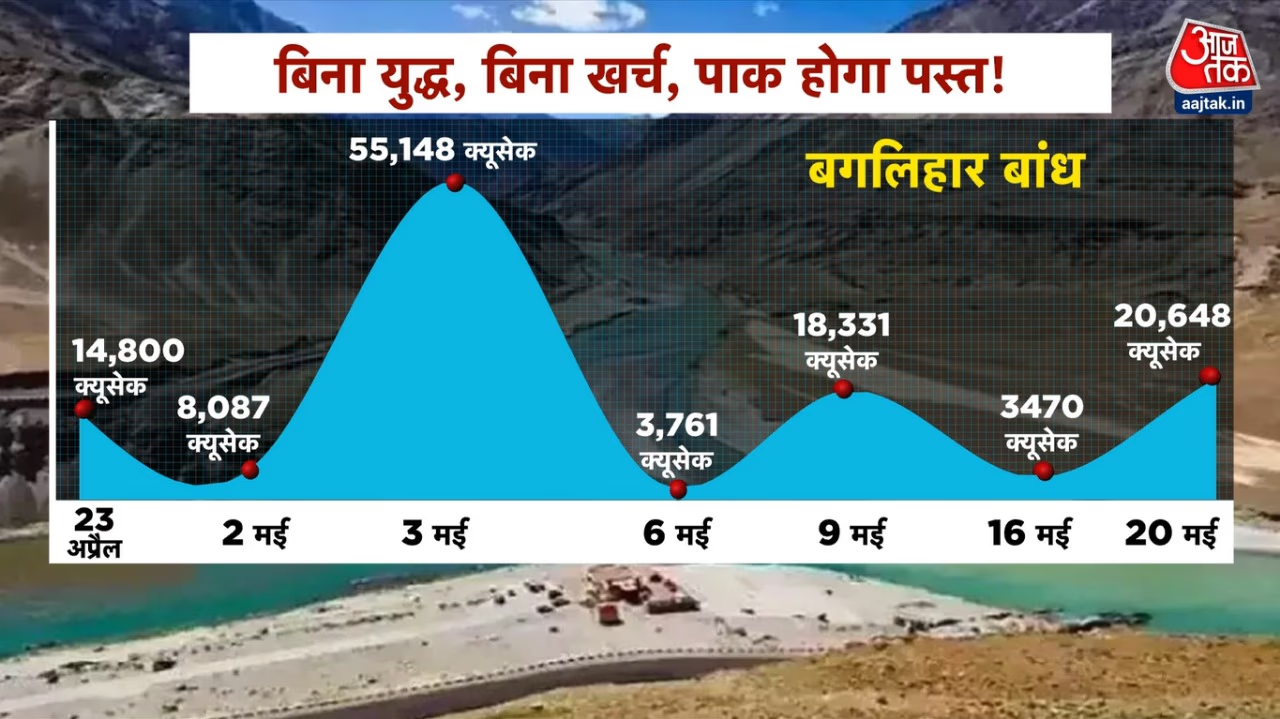Prime Minister Narendra Modi remarked on Tuesday that much hasn't been done yet with the Indus waters. So, what is PM Modi’s ultimate strategy regarding the Indus Water Treaty? The Modi government's move to suspend the treaty is marked as essential in the fight against terrorism. According to PM Modi, it's just the beginning. He asserted that he’s yet to make significant moves regarding the treaty. The question lingers: is there an ace up Modi's sleeve for the treaty?
The aftermath of ‘Operation Sindhuur’ may soon leave Pakistan in dire straits. Pakistan’s leaders are sweating and pleading for mercy. India's strategic suspension of the Indus Water Treaty has the country perplexed on handling this challenge. For 60 years, Pakistan exploited the treaty, and now India has resolved that blood and water won’t flow together.
India’s Decision Stirs Pakistani Annoyance
Following the Pahalgam attack on April 22, India’s suspension of the Indus Water Treaty left Pakistan baffled. Initially, threats were made and World Bank pressure was suggested, but realization dawned that the lopsided deal signed decades ago required rectification. This assertive approach has unsettled not only the Pakistani government and lawmakers but also terrorists and army generals, sparking unanimous threats.
In Pakistan’s parliament, discussions are ongoing about India's resolute decision on the treaty. Legislator Syed Ali Zafar highlighted in the National Assembly that 90% of Pakistan’s agriculture relies on the Indus, and without water, famine threatens.
The Indus: Pakistan’s Lifeline
The Indus River is deemed a lifeline for Pakistan. Three-quarters of Pakistan’s water emanates from treaty-bound rivers. Ninety percent of the country's 4.7 million-acre farmland is irrigated using the Indus River system. Major hydropower projects in Mangla and Tarbela depend on this agreement, contributing to 30%-50% of the country's power generation.
From electricity to irrigation, Pakistan’s dependency on the Indus is colossal. The suspension has caused upheaval, further exacerbated by existing inter-state water disputes. Pakistani Punjab is accused of usurping other states' water shares, intensifying the unrest.
Public Fury Targets Leaders
Last week, the convoy of Asif Ali Zardari's daughter, also the sister of the PPP Chairperson, was attacked by the public. There’s fierce opposition to canal construction on the Indus. Sindh locals claim water meant for them is diverted to Punjab. The resulting protests turned violent when law enforcement opened fire. Demonstrators stopped the convoy near Jamshoro city, voicing dissent against the Sindh government and confronting the World Bank delegation with attempts at baton charges.
Previously, on May 21, in Sindh, the local home minister’s residence was torched by demonstrators. The situation is volatile, with India’s strategy hitting the mark. Imagine the future challenges for Pakistan if India concretely halts Indus flows.
Satellite Imagery Shows India Controlling River Flows
The suspension of the Indus Water Treaty has lasted more than a month, yet chaos reigns in Pakistan. Concerns over the Indus River have policymakers parched while farmers fret over irrigation. India's strategic move is proving more impactful than battlefield victories. Our open-source investigation reveals significant insights.

Source: aajtak
Satellite imagery and water data over the past month clearly show India has begun controlling Chenab and Jhelum river flows, noticeably altering their courses. Before April 23, all was regular at the Baglihar Dam on Chenab River; changes became visible by early May. Flushing operations altered the river's color due to sediment release. Up to May 10, dam gates remained shut, only for water to gush on May 11, with gates closing again on May 13, and reopening on May 21. These moves highlight India's controlled dam operations, affecting Pakistani irrigation, signaling only a beginning.

Source: aajtak
India's last dam on Chenab, Baglihar, contrasts with Pakistan’s initial Marala Dam. Fluctuations in flow are discernible in the dam data. Prior to treaty suspension, flows were 14,800 cusecs; by May 2, they declined to 8,087 cusecs, spiking to 55,148 cusecs by May 3, and later plummeting. By May 16, flows were 3,470 cusecs, surging to 20,648 cusecs by May 20. While India enhances dam operations, Pakistan’s irrigation reliance falters. And this is merely the onset of the unfolding strategy.




